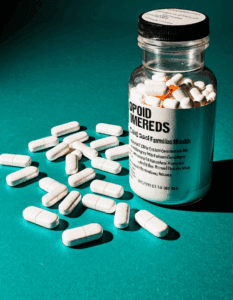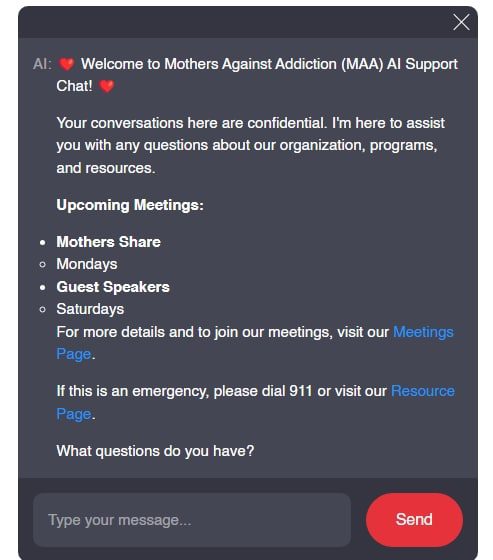Opium has been a subject of fascination and concern due to its complex effects on the human body and mind. As a derivative of the poppy plant, its use dates back thousands of years, serving both medicinal and recreational needs. This article explores what opium does, diving deep into its physiological and psychological nuances while comparing its impacts with other well-known substances. At Mothers Against Addiction, we understand that knowledge is power. When parents learn about the real effects of substances like opium, we can better support our children and each other.

## What Does Opium Do? Effects on Body and Mind
Before we explore what opium does, it’s essential to define what opium actually means. Opium is derived from the latex of the poppy plant, primarily the Papaver somniferum species. This sticky substance contains several alkaloids, including morphine and codeine, responsible for its potent effects. Historically, opium has been used for pain relief and anxiety reduction, and it even played a role in spiritual experiences. Yet, the implications of its use extend far beyond its medicinal properties, often resulting in addiction and severe consequences.
In essence, opium can more than just comfort; it can entrap. The interplay of euphoria and pain relief can easily lead to dependency and a cycle of compulsion and regret. Families dealing with the aftermath must grasp not only what opium does but what it represents in the larger narrative of addiction.

The Top 7 Effects of Opium on the Body and Mind
One of the most well-known effects of opium is its ability to provide significant pain relief. This is primarily due to morphine, which alters how the brain perceives pain. For those suffering from chronic pain conditions like cancer or severe injuries, prescribed opiate medications can offer a brief respite but carry a high risk of dependency.
Opium induces a sense of euphoria that many users chase. When taken, it triggers the release of dopamine in the brain, creating both a physical and mental high. This pleasurable sensation can lead to repeated use as individuals strive to recapture that initial experience, even at tremendous costs to their health and responsibilities.
The critical dangers of opium use can’t be stressed enough, especially its effect on respiratory function. Opioids, including opium, can significantly depress breathing, leading to insufficient oxygen supply to vital organs. This risk intensifies when opium is mixed with other depressants like alcohol.
Long-term use of opium can lead to cognitive impairment. Studies reveal that heavy opioid users may struggle with memory, attention, and decision-making. This is crucial for parents supporting children dealing with addiction, as their loved ones may find it challenging to function in daily life.
Stopping opium after prolonged use can trigger severe withdrawal symptoms as the body fights against the absence of the drug. Symptoms could range from anxiety to nausea, muscle pain, and insomnia. Understanding these elements can be crucial for families looking to support loved ones in recovery.
Opium is notorious for its high potential for addiction, akin to heroin and cocaine. Physiologically, the brain can become reliant on opium for pleasure and pain relief, leading to compulsive behaviors that are tough to shake off. This cycle devastates not only the individuals involved but their families, too.
Prolonged opium use can also trigger or worsen mental health disorders such as depression and anxiety. The relationship between substance abuse and mental well-being is complex. Many individuals self-medicate with opium, hoping to escape underlying issues, which creates a vicious cycle that’s hard to break.

What Does Salvia Do Compared to Opium?
While both salvia and opium impact the mind, they do so in contrasting ways. Salvia divinorum, a psychoactive plant, induces intense dissociative effects, often leading users to experience altered perceptions and hallucinations for a short time. Unlike opium, salvia doesn’t typically lead to physical dependence but can result in dangerous behavior or psychological distress for some users.
Understanding these differences isn’t just academic; it’s crucial for families eager to educate themselves about substance use. If your child is experimenting with substances, knowing what they do can empower you to have necessary conversations about the risks involved.

Exploring Other Substances: What Does Acid, LSD, and Heroin Do?
The experience of opium can also be contrasted with drugs like acid (Lysergic acid diethylamide), heroin, and hashish.
Acid is a hallucinogen that affects serotonin receptors in the brain, leading to altered mood, perception, and visual disturbances. Users often report profound realizations and altered sensory experiences, which stand in stark contrast to the sedative effects of opium.
Similar to acid, LSD induces altered states of consciousness and vivid hallucinations. Much like its cousin, acid, the impact on the mind is starkly different from opium’s calming effects; LSD enhances rather than dulls sensory experiences.
Like opium, heroin is an opioid but is synthesized and often purer. Users report an intense rush of euphoria but face similar addiction risks and catastrophic outcomes. The immediate effects closely resemble those of opium, but the dangers escalate due to heroin’s potency and method of use.

What Is Hashish and How Does It Compare to Opium?
Hashish, a substance derived from the cannabis plant, interacts with the endocannabinoid system instead of the opioid receptors that opium targets. While users often seek hashish for its relaxing effects, it does not carry the same risks of respiratory depression and physical addiction that opium does. However, the euphoric experience it provides can lead to unique dependencies and psychological impacts.
The multi-faceted nature of these substances underlines the importance of comprehensive education and understanding in addressing the challenges related to substance use.
The ongoing battle against addiction is not just a personal fight; it’s a shared struggle. Families grappling with the aftermath of addiction must maneuver through a tough landscape filled with varying substances, each bringing its own set of risks and benefits. To foster meaningful change, education and support from communities and organizations like Mothers Against Addiction can help guide parents through this challenging journey. It’s only by communicating openly and compassionately about these harsh realities that we can begin to heal.
In striving for awareness about opium and its effects, we can significantly impact how families address addiction’s challenges. Knowing “what does opium do” helps us make informed choices that could foster a more supportive environment for our loved ones. Together, we can heal and rebuild.
Stay informed and engaged. To further explore the nature of substances and their impacts, check out topics like Are Shrooms bad For You ? and Marijuana Use disorder. As a community, we can face this challenge head-on.
What Does Opium Do to Your Body and Mind Effectively
Opium has been historically significant, influencing cultures, economies, and even creating conflicts. But if you’re wondering what does opium do today, it’s definitely a mixed bag of effects. When consumed, it primarily interacts with the brain’s receptors, which can lead to both pain relief and immense pleasure. Surprisingly, it can also cloud judgment and induce feelings of euphoria, which is why people may seek it out. In a way, it’s like a rollercoaster; thrilling at the beginning but not without its steep drops.
The Many Faces of Opium’s Effects
Have you ever heard about the importance of balance? Well, that’s particularly relevant when discussing opium. Besides offering immediate comfort, users can quickly develop a tolerance. This can lead to larger doses, which in turn increases the risk of addiction—a serious problem that many families face today. The cycle of seeking relief can often resemble the frenzy we see in video games, just like in dragon ball devolution( where players keep pushing limits. Much like in a game, when users push past their limits, they risk severe health implications, including respiratory issues and compromised mental functions.
But it’s not all doom and gloom; there are strides being made in pain relief alternatives. For instance, a new pain medication approved by Fda() aims to offer similar relief without the high potential for addiction that opium carries. As research progresses, hope remains for those grappling with chronic pain or addiction. Moreover, educational resources are crucial for families, much like understanding Batteries And Bulbs() can energize our everyday lives.
Cultural Curiosities and Myths
Interestingly, the allure of opium has also seeped into popular culture, leading to various misconceptions about its effects and allure. Legends and media often depict it as something sinister. Just like the portrayal of a scary clown( in horror films, opium’s negative imagery can overshadow its historical significance. Yet, its role has been far more complex, tied up with international trade and medicine. The ongoing saga of addiction, however, continues to cast a long shadow on its legacy.
As we dive deeper into understanding the question of what does opium do, it’s essential to highlight how real-life implications can differ from these portrayals. Studies exploring substances often cover varying terms like What Is Pcp medical term( to shed light on dangerous dependencies. By investigating the multifaceted nature of opium, we gain insights that can help families navigate these challenges, potentially leading to better support systems for those caught in the cycle of addiction.





























